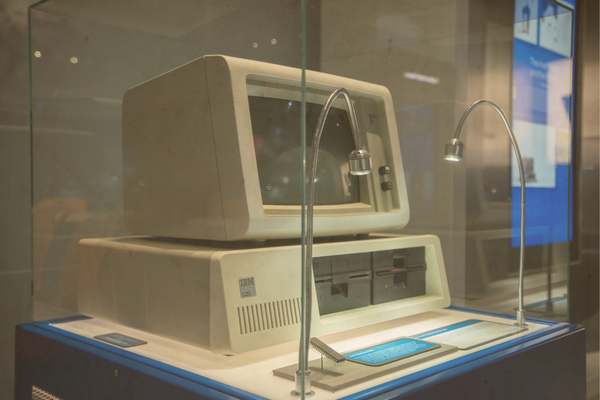On August 12, 1981, IBM unveiled the IBM 5150 Personal Computer, a beige box that would redefine what “computer” meant. Until then, personal computers were niche gadgets for hobbyists or high-priced tools for specialized business use. IBM’s entry brought credibility and a design philosophy that turned the PC from a novelty into a global standard.
Priced at $1,565, it featured a 4.77 MHz Intel 8088 processor, Microsoft’s MS-DOS, and, most importantly, an open architecture that would ignite a hardware and software revolution.
From Mainframes to the Masses
IBM was no stranger to computing power.
For decades, it had dominated the mainframe and business computing markets with machines that filled rooms and required teams to operate. But in 1980, William Lowe of IBM’s Boca Raton lab saw the winds shifting as microprocessors were becoming cheaper and more powerful, and a new market of small businesses and consumers was emerging.
His pitch to CEO Frank Cary was bold: deliver a $1,500 consumer PC in just one year.
The challenge landed with Don Estridge, who defied IBM tradition by sourcing off-the-shelf parts instead of designing everything in-house. Intel supplied the 8088 CPU, Microsoft delivered the operating system, and Epson provided printers.
The result was the IBM 5150, a versatile machine that could connect to a monitor or even a TV, bringing computing power into everyday homes.
An Open Door to Innovation
Perhaps IBM’s most groundbreaking decision was to publish the technical specifications for the 5150. This open architecture meant anyone could create software, peripherals, or even “IBM-compatible” machines. Within a year, over 750 software titles existed for the PC, from business tools like VisiCalc to entertainment programs.
The marketing matched the innovation.
IBM’s ads featured Charlie Chaplin’s “Little Tramp,” bringing approachability and humor to a product from a company better known for corporate suits than whimsical charm.
The response was explosive. At the peak of demand, IBM was selling one PC every minute of every business day.
Time magazine crowned the PC its “Machine of the Year” in 1982.
The Wrap
The IBM PC launched an era.
Its open standards became the blueprint for the personal computing industry, enabling a competitive ecosystem that still dominates today. While IBM’s market share would dwindle as clones flooded the market, the architecture it established remains the backbone of over 85% of PCs worldwide.
Forty-four years later, the IBM 5150 stands as both a triumph of speed to market engineering and a guide to how openness can outlast even the originator’s market dominance.






